“In these mysterious moods I did not like her. I experienced a strange tumultuous excitement that was pleasurable, ever and anon, mingled with a vague sense of fear and disgust. I had no distinct thoughts about her while such scenes lasted, but I was conscious of a love growing into adoration – and also of abhorrence.”
Sheridan Le Fanu, Carmilla (1872)
In 1872, a full twenty-five years before the release of Bram Stoker’s Dracula, Irish author Sheridan Le Fanu published Carmilla. This story depicts the relationship between the young and innocent protagonist, Laura, and the confident and mysterious title character, Carmilla. A friendship blossoms between Carmilla and Laura and the two become close, but over time Laura becomes suspicious of Carmilla’s strange behaviour. She flees from her, and it is revealed that Carmilla is a vampire who has been preying on Laura – feeding on her nightly and attempting to turn her into a creature of darkness. Carmilla is confronted, killed, has her head removed and body burned, and the ashes of both are thrown into the river.
A simple story and much shorter than a true novel, Carmilla’s historical impact outweighs its length. Not only is it one of the earliest and most notable pieces of vampire fiction, and a great influence on Dracula itself, it is also the origin point of one of the most controversial tropes in this genre of fiction: the Lesbian Vampire.
The vampire myth as constructed by Dracula and its compatriots positions vampires as a corrupting sexual influence upon women. Older men sneak into the bedrooms of virginal young women, penetrate them, and therefore transform them into something tragic and ungodly. They personify a threat to patriarchy; a threat perceived in the form of female sexuality. The idea is that an unmarried woman having symbolic sex will irrevocably twist them into some kind of monster.
The Lesbian Vampire exists as an extension of this idea, focusing on one of the most diabolical threats to patriarchal ideology – a woman who sexually desires another woman. Carmilla’s victims are exclusively female, and her pursuit of Laura is very visibly romantic in nature. She kisses Laura, confesses love for her, the two take walks in the moonlight and embrace each other. This is what leads to Carmilla feeding upon Laura and threatening her death. Symbolically, there is no separation between the two. The danger Laura is in is caused by same-sex desire. Carmilla’s villainy is her lesbianism. The trope does not have to include vampires in a strict sense, but more generally the link of sapphic seduction leading to corruption.
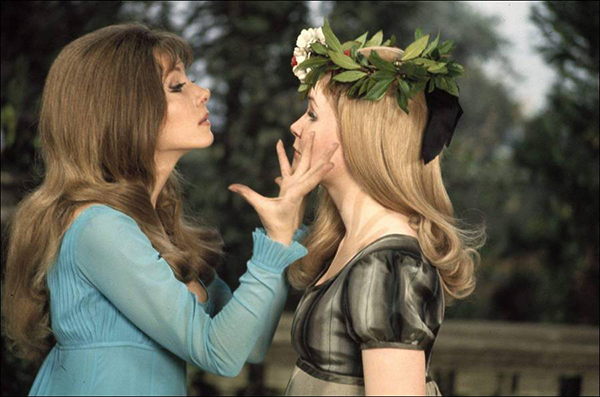
Reading Carmilla as a 21st century queer woman is an oddly charming experience, as it reads as much as a straight-forward romance as it does a gothic horror. The first half of the story is dedicated to building the relationship between these two women, and the increasingly romantic nature of that relationship. It gives us a meet-cute, sexual tension, stolen embraces, confessions of love, and a steadily increasing intensity of passion – all with very little irony. One could take the first 50 pages of Carmilla and from there conclude it in the form of a love story, and the change would be imperceptible. It’s no surprise that modern adaptations – perhaps most famously the 2014 web series of the same name – often rewrite the Carmilla/Laura relationship as simply romantic; it’s already there in the original text
“How beautiful she looked in the moonlight! Shy and strange was the look with which she quickly hid her face in my neck and hair, with tumultuous sighs, that seemed almost to sob, and pressed in mine a hand that trembled. Her soft cheek was glowing against mine. “Darling, darling,” she murmured, “I live in you; and you would die for me, I love you so.”
“Sometimes after an hour of apathy, my strange and beautiful companion would take my hand and hold it with a fond pressure, renewed again and again; blushing softly, gazing in my face with languid and burning eyes, and breathing so fast that her dress rose and fell with the tumultuous respiration.””
“It was like the ardour of a lover; it embarrassed me; it was hateful and yet overpowering; and with gloating eyes she drew me to her, and her hot lips travelled along my cheek in kisses; and she would whisper, almost in sobs, “You are mine, you shall be mine, and you and I are one for ever.”
“From these foolish embraces, which were not of very frequent occurrence, I must allow, I used to wish to extricate myself; but my energies seemed to fail me. Her murmured words sounded like a lullaby in my ear, and soothed my resistance into a trance, from which I only seemed to recover myself when she withdrew her arms.”
What’s notable here is that though Carmilla is the pursuer in this relationship, Laura’s attraction to her is just as evident. She constantly calls Carmilla beautiful, describes her body in prurient detail, and seems unable to resist her advances. Occasionally she will seem shocked at her own inability to resist Carmilla and express disgust, but each time she will inevitably be drawn towards her again. This behaviour can be explained away by Carmilla’s vampiric compulsion powers, but it does not require to be. It is just as easily explained as Laura experiencing attraction that she feels guilty over and thus resists. Indeed, if this were a heterosexual couple in a modern story, that would inevitably be the explanation. To demonstrate, one only needs to note how similarly Laura’s behaviour towards Carmilla can be mapped onto Buffy’s behaviour towards Spike in season six.
The story does not feel the need to explore this, because – as should be expected of a 19th century text – it takes for granted that homosexuality is an aberrant sin that no person of good moral standing would partake in. The reader is clearly meant to be horrified by Carmilla’s advances, despite the fact that before the blood-drinking starts, there is no actual horror present in them. Le Fanu doesn’t need to add it, because in the mind of patriarchy, lesbianism is the horror. Laura is required by narrative structure to find Carmilla irresistibly seductive, though the obvious implications of that are ignored, because it is so taken for granted that a real human woman would never be attracted to another woman of her own free will. And so what we get is a story that is so presumptively dismissive of the idea of lesbianism that it forgets to actively dismiss it. The conservatism of this work creates space for queer readings by bringing the queerness close enough to the forefront of the text that it cannot be ignored, but not so close that it is actively acknowledged. Without acknowledgement it cannot be actively dismissed, and so continues to exist in the margins of the story, Simply put: the homophobia makes it gayer.
It is from this contradiction that the trope of the Lesbian Vampire emerges, along with its sister tropes of the Depraved Bisexual and the Psychotic Lesbian. It persists throughout the ages in many forms. Whether the subject of pulp fiction books of the 1970s, throwaway villains on mid-00s TV shows (see Lost Girl, Torchwood, True Blood, or the fascinatingly flawed Sugar Rush), or even in more nuanced modern forms such as Killing Eve or Jennifer’s Body, the Depraved Bisexual is a potent figure in our collective media consciousness. Time and time again, when sapphic desire is designed to be included in a story, it comes packaged with emotional instability and depraved morals. As far as our media is concerned, lesbians are and always have been bad girls.
Here is where we need to acknowledge a simple truth about one of our titular bad girls, our favourite Dark Slayer, Miss Faith Lehane. She is a favourite of both fans and, personally, myself. She is a unique and fascinating character. She is also, in the context of wider literary trends, not remotely special. She is just another Depraved Bisexual; another Lesbian Vampire. She’s just one in a very long list of wicked women attempting to lure Good Girls away from healthy christian morals, into criminality and homosexual behaviour.
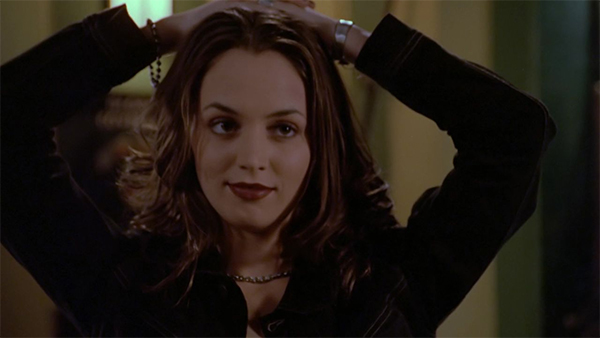
Of course, Faith isn’t textually a vampire. But she is a Slayer, and in this show, Slayers and Vampires are consistently presented as two sides of the same coin. Both are created from a demonic power inhabiting a human body, both are killers that stalk graveyards at night, both conflate death with food and sex. Faith has brought the “hungry and horny” motif to the forefront this season, and this episode revisits that idea several times. More so than any actual vampire character (with the possible exception of Dracula himself) it’s Faith who fills the role that vampires usually fill in classical literature – the dark, seductive figure luring away helpless young women, attempting to corrupt them.
In keeping with this theme, this episode plays out as a seduction, enacted by Faith towards Buffy. It is a seduction on multiple fronts, encouraging four separate things: rejection of authority, “bad” morals, embracing Slayerhood, and lesbianism. All four are presented as intertwined and interchangeable, even when this conflation doesn’t strictly make sense. The actual series of steps within the episode make sense symbolically, but not always logically. It’s a “slippery slope” that isn’t really a slope. Ignoring Wesley’s authority as a Watcher leads to fighting vampires, leads to skipping school, leads to dancing with another girl, leads to getting arrested, leads to manslaughter. It’s less a series of logical steps than it is a blended smoothie of conservative fears.
Underlying all of this episode (much like it underlies conservative fears) is the constant spectre of female sexuality. There’s no two ways about it – this is a deeply horny episode. It is framed by the opening scene, which centres on Faith’s insistence that Buffy be having casual sex with her friends. The dialogue is laced with constant double-entendres to drive this point home, as you can see from some of the choice quotes above. There is constant sexual and romantic imagery. Faith’s heart-on-the-window and the dancing in the Bronze are two iconic examples, but also consider the pivotal scene early on where Faith brings Buffy around to her point of view on slaying by inviting Buffy into a hole, in which they both get wet. Sex is all over this episode, deliberately so.
“Tell me that if you don’t get in a good slaying, after a while, you just start itching for some vamp to show up so you can give him a good *hngg*”
“The look in your eyes after a kill, you just get hungry for more”
“Tell me you don’t get off on this.”
“Hey. You wanna get out of here?”
That scene is itself a direct call-back to Surprise/Innocence, last year’s pivotal Act Two climax centering around the dangers of burgeoning sexuality, in which Angel and Buffy climb out of the same hole, also soaking wet. As is the later scene, when Buffy returns home from her wild night out with Faith, which down to the outfits is a functional repeat of Buffy returning home after sleeping with Angel. Part of Faith’s purpose this season is to be a proxy through which Buffy can revisit the events of Season Two, and clearly that includes the parts of Season Two dedicated to Buffy’s sexual desire and the dangers that stem from that.
Though we are focusing on Faith here, it’s worth considering Buffy’s desires here. Gellar plays Buffy in full “resisting a subconscious desire” mode, in a way that is palpable throughout the whole episode. We see her actively repress a reaction to Faith’s suggestions in the early courtyard scene, and then embrace them later on. We see her wide-eyed and gushing about Faith in the classroom, grinning as they run off together, followed by haunted shock and shame after the Deputy Mayor’s death. It is a classic seduction arc – resistance, embrace, ecstasy, shame. Gellar simply plays it all too perfectly. We can see these dual impulses within Buffy; a push away from and pull towards the things Faith is encouraging. She is experiencing a temptation that grows into adoration, but also at the same time, abhorrence.
Another part of Faith’s role as Shadow Self is to encourage Buffy to embrace her life as a Slayer – something that she rejected at the end of Becoming. The same episode with the “coming out” scene that so firmly paralleled being a Slayer with being gay, a metaphor that has been repeatedly called upon in episodes since. The result is that the metaphors become conflated. When Faith tells Buffy to embrace being a Slayer, she also appears to be telling her to embrace being a lesbian. Again, the famous “heart-on-the-window” scene encapsulates this conflation; simultaneously an invitation to vampire-hunting and an invitation to romance.
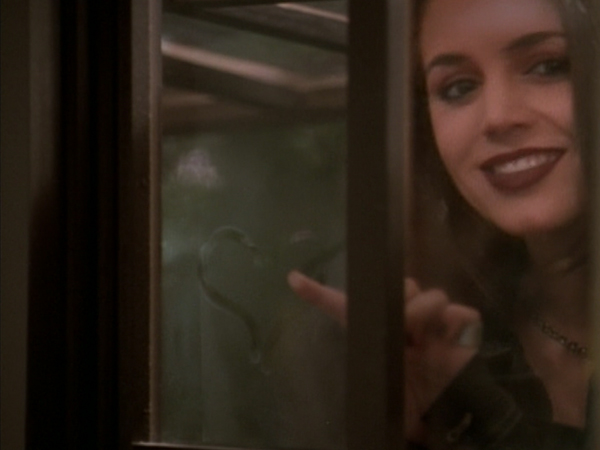
All of this is without mentioning Eliza Dushku’s performance, which is at all times simply dripping with sexuality. She has always played Faith with a sexual edge, but she turns it up to 11 here, to the point that it’s difficult to interpret Faith’s motivations in this episode as anything other than “desperately trying to get into Buffy’s pants”. Doug Petire, writer of this episode, explicitly acknowledges it in his commentary.
“Here we have the growing lesbian subtext between these two, which was always fun to play with. Eliza was always pushing the sexuality, and nobody, uh, remembered to stop her, which we’re all very grateful for.”
Doug Petire, commentary track for 3×15 Bad Girls
The key part of this quote is sometimes missed by the fandom. It is not telling us that Dushku invented the lesbain subtext wholesale and inserted it into the episode (though she certainly would be in favour of doing that). Rather, it’s telling us that the lesbian subtext was something the writers room was explicitly aware of and eager to push as far as they felt able to. There is a tangible sense that the writers wanted to go further with these ideas, and perhaps even make them explicit, but were held back by what they knew would be expected of a network TV show in the 1990s. It even feels a little like a dry run for what they would do with Willow and Tara in season four, which starts off as heavy subtext before gradually becoming textual.
So if we assume that the writers are purposefully inserting lesbian subtext into this story, the question we must ask is – why? Certainly, it’s not to position Faith as a textual romantic option for Buffy – I don’t think even the most delusional shippers among us would consider that as a genuine possibility. In fact, I suspect it’s the opposite.
Just as Innocence moved Angel from the position of “love interest” to “Big Bad” for the rest of the season, this episode does a similar thing to Faith. It’s a major functional upgrade for Faith as a character, as she moves from being an occasional ally of Buffy, to the emotional lynchpin and central antagonist of the entire season. This doesn’t seem to have always been the plan – Dushku was originally only contracted for six episodes (which would make this her final appearance), and rumours have been floating around for a while that the original ending to this episode would involve Faith committing suicide. Though that remains unconfirmed, a decision does seem to have been made around this time to upgrade Faith’s importance and reposition her as a villain for the rest of the season.
At the same time, there also seems to have been a decision to start writing Faith as a more obviously queer character. Probably not a conscious decision, but a decision nonetheless. While there has always been a queerness to Faith’s character, it came mostly in the form of jokes or unintentional implications. Here it becomes something more. The double-entendres ramp up, as do the sexual undertones. It starts to take less the form of subtext and more the form of coding (two different things that are sometimes conflated). Soon we will get Faith kissing Buffy (3×17), Faith asking Buffy for a kiss (3×22), Faith stripping Buffy naked (4×16), Faith having suspiciously accurate gaydar (4×16), Faith going home from a club with a woman (AtS 1×18), Faith being described as wanting Buffy to love her (7×20). From this point on, Faith becomes, at the very least, a character that is implied to be queer.
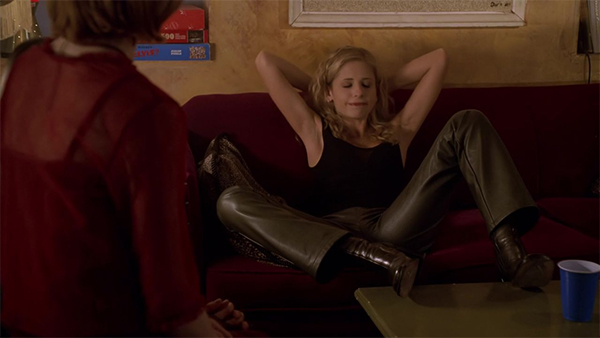
So what does that leave us with? Simply, a character who is coded more gay as they become more evil, and a main character whose temptation towards danger is conflated with her temptation towards lesbianism. There’s not really a way to reclaim this. The episode is called Bad Girls. We’re meant to see what these girls are doing as “bad”, and all forms of “badness” are conflated. Uncontrolled lust for battle is uncontrolled lust for other women. Neglect of schoolwork is neglect of a girl’s boyfriend. Sexy-dancing leads to crime. Buffy is in danger because she is tempted by same-sex desire, and Faith’s villainy is tied to her lesbianism. There is no separation.
That isn’t to say that it’s bad to watch. Many queer viewers, myself included, find more resonance in stories that explore queerness as a dark taboo, rather than sanded-down, family-friendly examples of Good RepresentationTM. But it is bluntly homophobic. I think it’s important to acknowledge that the way this arc is written is a result of the show’s conservative streak. It comes from the same place as the show’s repeated instinct to punish Buffy’s sexuality, as its limited understanding of sexual assault, as its refusal to interrogate certain kinds of misogyny. The show has an undeniable conservative streak that is impossible to extricate from its more radical aspirations.
In 1872, a lesbian-coded vampire attempts to woo a chaste heroine, kisses her, kills a man, is cast as the villain of the story, is ultimately punished for her wicked ways and killed. In 1999, a lesbian-coded vampire slayer attempts to woo a chaste heroine, kisses her, kills a man, is cast as the villain of the story, is ultimately punished for her wicked ways and killed. From a certain point of view, nothing seems to have changed.
There is no easy, soothing conclusion here. The history of lesbian media is one blighted by uncomfortable portrayals, and simultaneously enhanced by them. Carmilla is a seminal work, riddled with flaws and conservative blindspots. So is Buffy. The Lesbian Vampire might be a homophobic trope inextricable from conservative patriarchy, but it’s also a compelling expression of homosexual desire, inextricable from queer culture. Iconic films like Black Swan, Bound and But I’m a Cheerleader stem from evolutions of this trope. So does Lesbian Vampire Killers. The history of this trope cannot be divorced from itself, and there is no good way to view it other than a double-edged sword. A contradiction for which we have a kind of adoration, as much a kind of abhorrence.
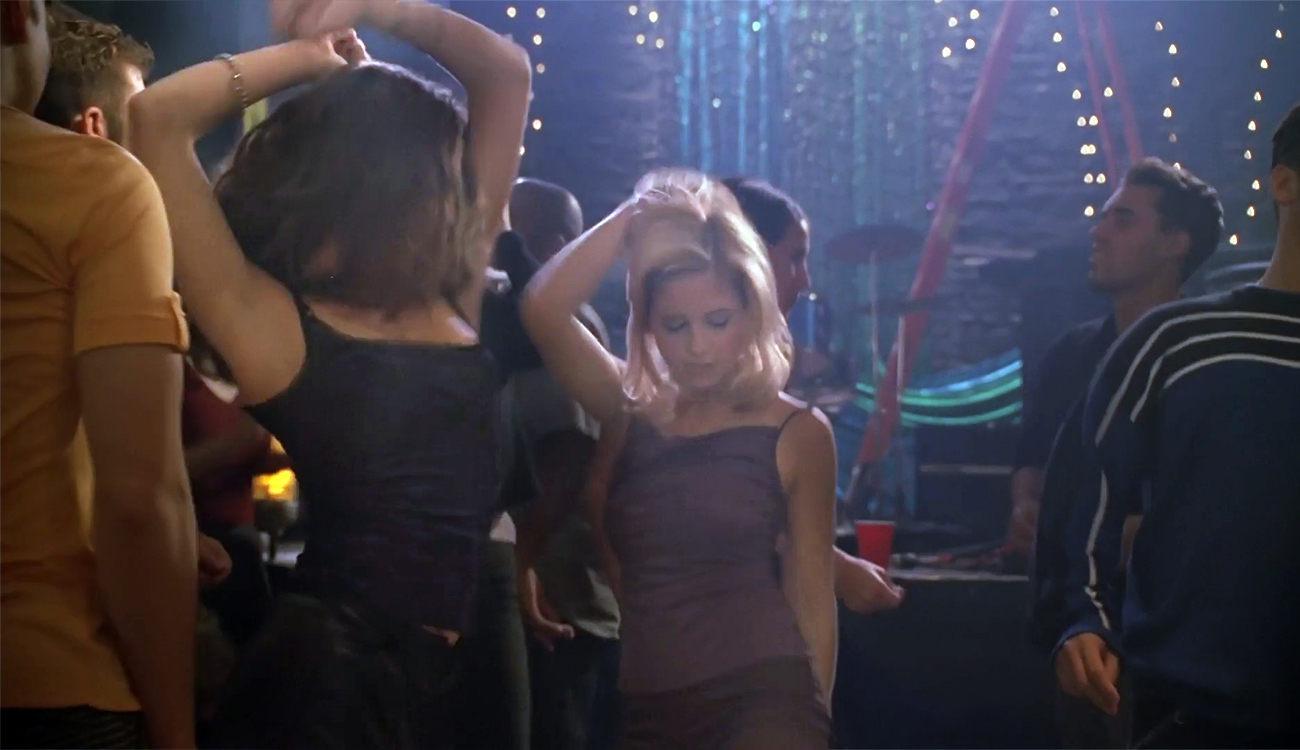
Whoo Bad Girls, it’s probably the episode I was most excited to reach in my first time watch, and like you say it’s definitely where Faith gets pretty much promoted in terms of narrative yeah. Sidebar, it was honestly surprising when I found how little she is actually in the show considering, in the side of the fandom I was exposed to prewatching at least, how prevalent she is the fandom.
I enjoyed the dive into the legacy of Carmilla and how it compares with Faith’s presentation, it’s a great choice for shaping your discussion of this episode and the overall portrayal of Faith’s character going forward.
Admittedly I’ve only ever seen the “nobody remembered to stop Eliza” part of the quote so that’s neat to see in full context.
Also like sorry to nitpick but just a tiny thing I noticed, you’ve got “The dialogue is laced with constant double-entendres to drive this point home, as you can see from some of the choice quotes above.” but the quotes are below instead of above just in case you wanted to know.
Anyway great essay as always, always excited to see an update from you. Really good read.
LikeLike
So happy to see a new essay, they are always so beautifully written! I really enjoy reading about the parallels between season 2 and 3, and I love the way you help me decode the story. Yours are my favourite essays on Buffy that I’ve come across and I always find it so valuable! Thank you ❤
LikeLike